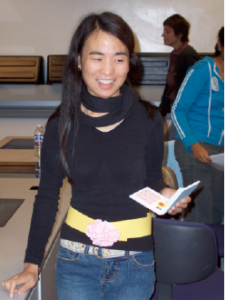HAY! What are you going to do with that Data?!!
Yvonne Rogers’s paper “Moving on from Weiser’s Vision of Calm Computing: Engaging UbiComp Experiences” is a revolt against the traditional .
It is no doubt that we are living in a sensor-invaded world, researches have been moving the deck in the Internet of Things (IoT) direction where “things” around us are just no longer normal things anymore, and rather smart things. Everything is evolving and becoming smart. Rogers argues that in spite of the cool and immensely amazing things we can do with all the sensors and data surrounding us, a group of critical concerns such as privacy and ethics in addition to the limitation of the field rises to stand in our way. This smart ecosystem which we live in today is because of Mark Weiser’s vision [reference here] of ubiquitous computing.
Rogers kicks off by introducing Mark Weiser’s vision of ubiquitous computing and its role in shaping what research in ubicomp has been like nowadays. Three core themes of Weiser’s work are discussed which are: context aware computing, ambient/ubiquitous intelligence and recording/tracking and monitoring. Despite the importance of the Weiser’s model, Roger stressed that the ubicomp research is hampered by impossible computational limitation and ethical concerns as well. So, he proposes a new alternative agenda which focuses on designing UbiComp for engaging user experience by shifting from “the proactive computing to proactive people” as he describes it.
Rogers’s new agenda consists of three key parts in which UbiComp research can focus on which are: Playful and Learning, Scientific, and Persuasive Practices, which he believes can play an important role in increasing user’s learning, creative thinking and playing as well as keeping people engaged and interactive with the information around them. One example that I really liked that Rogers mentioned under the persuasive practices area, is a project from a Student Design Competition in Canada in 2006 [2] (see Figure 1 below ) which is a basically a cellphone application connected to a pedometer designed to encourage teenage girls to monitor their exercise levels and to learn more about nutrition. Rogers’s point is that efforts of UbiComp research should be spent on using technologies focuses at self-monitoring and behavioral changes rather than having data processed for us to consume.

Finally, although I disagree with what Rogers’s certainty about AI failing to achieve their goal that “An appropriate computer a really a mind” as technology has been always been amazing our previous generations who never imagined that we would be living in such world, yet his message that Ubiquitous computing as Weiser imagined it is far from reality and he suggests that UbiComp researchers should focus their work on give the user the tools which promotes learning, creative thinking and involving users in the decision making process rather than having data collected and decisions made on our behalf is a good wake up call to account for.
Relevant Paper:
I believe that the paper below is a good case study example of what Ubiquitous computing is capable of achieving as it shows us what are the kinds of Data that we can collect just by using a cheap small thermal sensor, which also poses the same issues of ethics and privacy that Rogers mentioned.
Peter Hevesi, Sebastian Wille, Gerald Pirkl, Norbert Wehn, and Paul Lukowicz. 2014. Monitoring household activities and user location with a cheap, unobtrusive thermal sensor array. In Proceedings of the 2014 ACM International Joint Conference on Pervasive and Ubiquitous Computing (UbiComp ’14). ACM, New York, NY, USA, 141-145. DOI=http://dx.doi.org/10.1145/2632048.2636084
- Yvonne Rogers. 2006. Moving on from weiser’s vision of calm computing: engaging ubicomp experiences. In Proceedings of the 8th international conference on Ubiquitous Computing(UbiComp’06), Paul Dourish and Adrian Friday (Eds.). Springer-Verlag, Berlin, Heidelberg, 404-421. DOI=http://dx.doi.org/10.1007/11853565_24
- Tammy Toscos, Anne Faber, Shunying An, and Mona Praful Gandhi. 2006. Chick clique: persuasive technology to motivate teenage girls to exercise. In CHI ’06 Extended Abstracts on Human Factors in Computing Systems (CHI EA ’06). ACM, New York, NY, USA, 1873-1878. DOI=http://dx.doi.org/10.1145/1125451.1125805
Leave a Reply Cancel reply